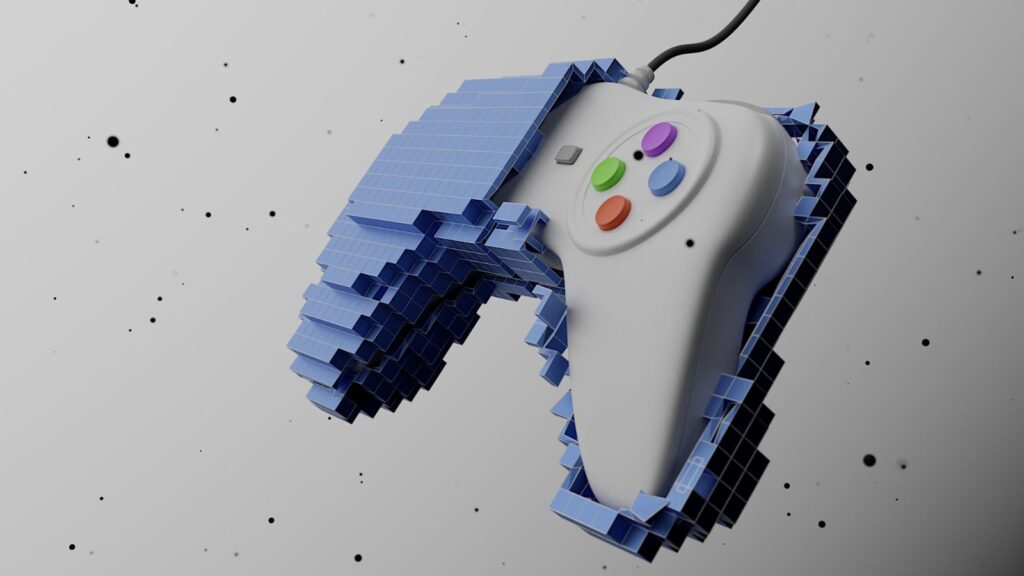
Since their invention, video game systems have advanced significantly, going from basic, pixelated games to intricate, immersive experiences that can match Hollywood blockbusters. Seeing how far we’ve gone is intriguing, whether you’re thinking back on the past or anticipating the future.
Today, let’s take a nostalgic journey through the history of video game consoles, from the early days of Pong to the cutting-edge technology of the PlayStation 5. But first, let’s settle in, play Diamond Hearts, and dive into the captivating world of gaming evolution.
The Birth of Video Games: The 1970s
Pong: The Pioneer
In 1972, Atari released Pong, the first commercially successful video game. Pong was a simple table tennis simulation, but it captivated players with its competitive gameplay. This modest beginning marked the start of the video game revolution. Pong’s success inspired a wave of innovation, setting the stage for future consoles.
The Magnavox Odyssey
Around the same time, the Magnavox Odyssey, the first home video game console, hit the market. Unlike Pong, which was a standalone arcade game, the Odyssey connected to a television and offered a variety of games using removable cartridges. Although rudimentary by today’s standards, it laid the groundwork for home gaming systems.
The Golden Age of Arcade Games: The Late 1970s to Early 1980s
Atari 2600: A Home Revolution

In 1977, Atari released the Atari 2600, which brought arcade-style gaming into living rooms across America. With its joystick controller and game cartridges, the Atari 2600 became a household name. Classics like Space Invaders, Pac-Man, and Pitfall! Defined this era and cemented video games as a mainstream entertainment medium.
Intellivision and ColecoVision
Following Atari’s success, other companies entered the market. Mattel’s Intellivision and Coleco’s ColecoVision offered more advanced graphics and gameplay. These systems introduced features like voice synthesis and better controllers, pushing the boundaries of what video games could offer.
The Console Wars: The Mid-1980s to 1990s
The Rise of Nintendo
The video game industry experienced a downturn in the early 1980s, but Nintendo revitalized it with the release of the Nintendo Entertainment System (NES) in 1985. With iconic games like Super Mario Bros., The Legend of Zelda, and Metroid, the NES became a global phenomenon. Nintendo’s innovative gameplay and memorable characters set a new standard for quality and creativity.
Sega Genesis and the Battle for Supremacy
In 1989, Sega introduced the Genesis, which is known for its superior graphics and faster processing power. The Genesis was the first 16-bit console, and it boasted a strong library of games, including Sonic the Hedgehog. The competition between Sega and Nintendo, often referred to as the “console wars,” drove both companies to innovate, leading to some of the best games and technological advancements of the era.
The 3D Revolution: The Late 1990s to Early 2000s
Sony Enters the Fray: PlayStation
Sony entered the console market in 1994 with the PlayStation. Its use of CDs instead of cartridges allowed for more storage and better graphics. Games like Final Fantasy VII, Metal Gear Solid, and Resident Evil showcased the PlayStation’s capabilities and solidified Sony as a major player in the industry.
Nintendo 64 and the Advent of 3D Gaming
Nintendo responded with the Nintendo 64 in 1996, which brought 3D gaming to the masses. Titles like Super Mario 64 and The Legend of Zelda: Ocarina of Time were groundbreaking, offering expansive worlds and innovative gameplay mechanics. These games remain some of the most beloved in gaming history.

The Modern Era: 2000s to Present
PlayStation 2 and Xbox: Expanding Horizons
The PlayStation 2, released in 2000, became the best-selling console of all time, thanks to its vast library of games and DVD playback capability. Microsoft entered the market with the Xbox in 2001, featuring powerful hardware and online gaming through Xbox Live. Halo: Combat Evolved became a landmark title, defining the first-person shooter genre on consoles.
The HD Generation: PlayStation 3, Xbox 360, and Wii
In the mid-2000s, consoles embraced high-definition graphics. The PlayStation 3 and Xbox 360 pushed technical boundaries, offering immersive visuals and online services. Meanwhile, Nintendo’s Wii, with its innovative motion controls, captured the casual gaming market, introducing new audiences to gaming.
The Current Generation: PlayStation 5 and Beyond
The release of the PlayStation 5 in 2020 marked the latest leap in console technology. With lightning-fast load times, ray tracing, and haptic feedback, the PS5 offers an unprecedented level of immersion. The Xbox Series X, Microsoft’s latest console, also pushes the envelope with powerful hardware and an extensive game library. These consoles continue to blur the line between reality and gaming, offering experiences that were once the stuff of science fiction.
Conclusion: The Future of Gaming
The history of video game systems is truly amazing, spanning from the modest origins of Pong to the stunning realism of the PlayStation 5. There are countless opportunities for gaming in the future as long as technology keeps developing. In terms of video game console history, the future chapter looks just as interesting as the voyage thus far, whether it comes in the form of virtual reality, augmented reality, or whole new advancements. Now settle in, grab your controller, and get ready to explore the always-changing world of video games with diamond hearts.